Winners, workshops and illuminating science Understand article
Science in School is published by EIROforum, a collaboration between eight of Europe’s largest intergovernmental scientific research organisations (EIROs). This article reviews some of the latest news from EIROs.
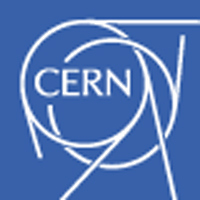
CERN
Winners of the 2015 beamline for schools competition announced
In June, CERN announced the winners of its 2015 beamline for schools competition. Two teams of high-school students will travel to CERN in September to carry out their own experiments using a CERN accelerator beam. The winners, the Leo4G team from Liceo Scientifico Leonardo da Vinci School in Florence, Italy, and the Accelerating Africa team from St John’s College and Barnato Park High School in Johannesburg, South Africa, were selected from 119 teams from around the world.
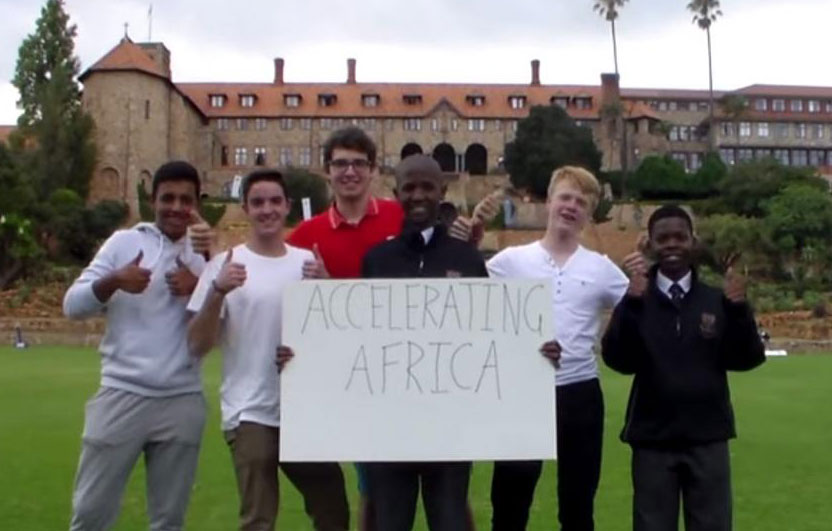
Africa’s proposal video
Image courtesy of Accelerating
Africa
The aim of the competition is to make a fully equipped beamline available for high-school students to run an experiment in the same way that researchers do at the Large Hadron Collider and other CERN facilities. In proposals of fewer than 1000 words, teams had to explain why they wanted to come to CERN, what they hoped to take away from the experience, and how they would use the particle beam for their experiment. They also had to summarise their written proposal in a creative and entertaining video.
You can read more about the two winning teams’ proposals and watch their videos on the CERN press website.
Based in Geneva, Switzerland, CERN is the world’s largest particle physics laboratory.
Check out the list of CERN-related articles on the Science in School website.

EMBL
It runs in the family
EMBL researchers have unveiled the first detailed 3D structure of the replication machinery – the polymerase – of the La Crosse orthobunyavirus (LACV). This virus causes human encephalitis but is a member of the same family as the flu virus, and the structure shows that the LACV polymerase has striking similarities to influenza virus polymerase.
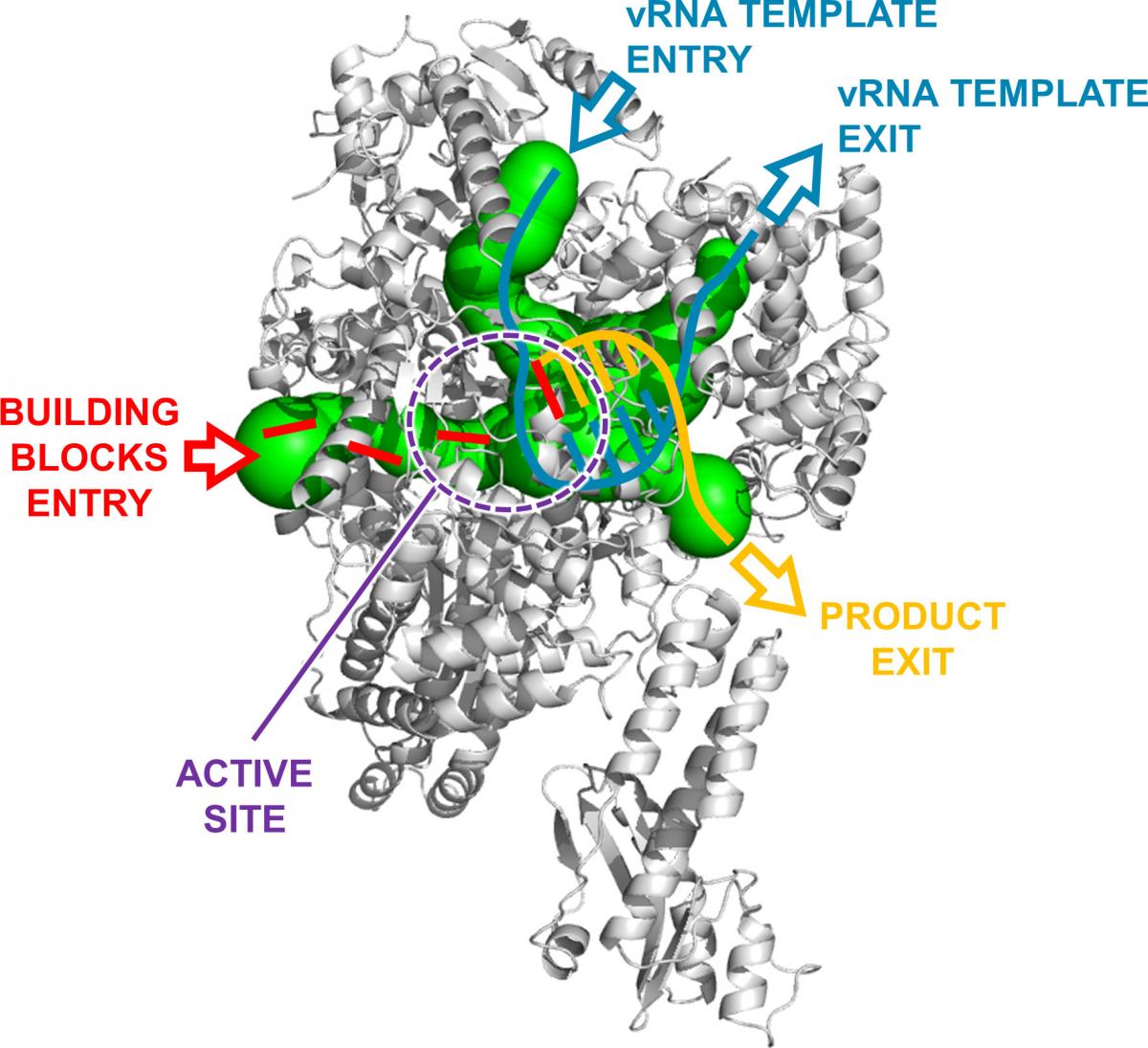
strand) enters the
polymerase active site along
a tunnel (green). The
template is used to make an
mRNA or vRNA copy (yellow
strand) by adding on RNA
building blocks (red).
Image courtesy of Gerlach et al
(2015)
These segmented negative-strand RNA viruses have a very specific way of making their mRNA: they ‘snatch’ a ‘cap’ of genetic material from the host cell mRNA and insert it into their own. This sets them apart from other groups of viruses, but also suggests that the complex machinery required to do this is likely to be common to them all.
That is exactly what the researchers found: the polymerase of the LACV looks very similar to that of the influenza virus. This level of detail has allowed the team to deduce how the polymerase functions in LACV and also to give new insight into the influenza polymerase. The team hopes that by understanding the structural and functional similarities across the whole group, promising drug compounds could be adapted to other related viruses.
To read more about this story, visit the EMBL website.
The full journal reference is:
Gerlach P et al (2015) Structural Insights into Bunyavirus Replication and Its Regulation by the vRNA Promoter. Cell 161: 1267–1279. doi: 10.1016/j.cell.2015.05.006
EMBL is Europe’s leading laboratory for basic research in molecular biology, with its headquarters in Heidelberg, Germany.
Check out the list of EMBL-related articles on the Science in School website.

ESA
More opportunities for teachers in Noordwjik
After a successful and expanded summer school for teachers (see the next issue for a full report), ESA is once again organising a training workshop for science teachers in association with the Galileo Teacher Training Programme.
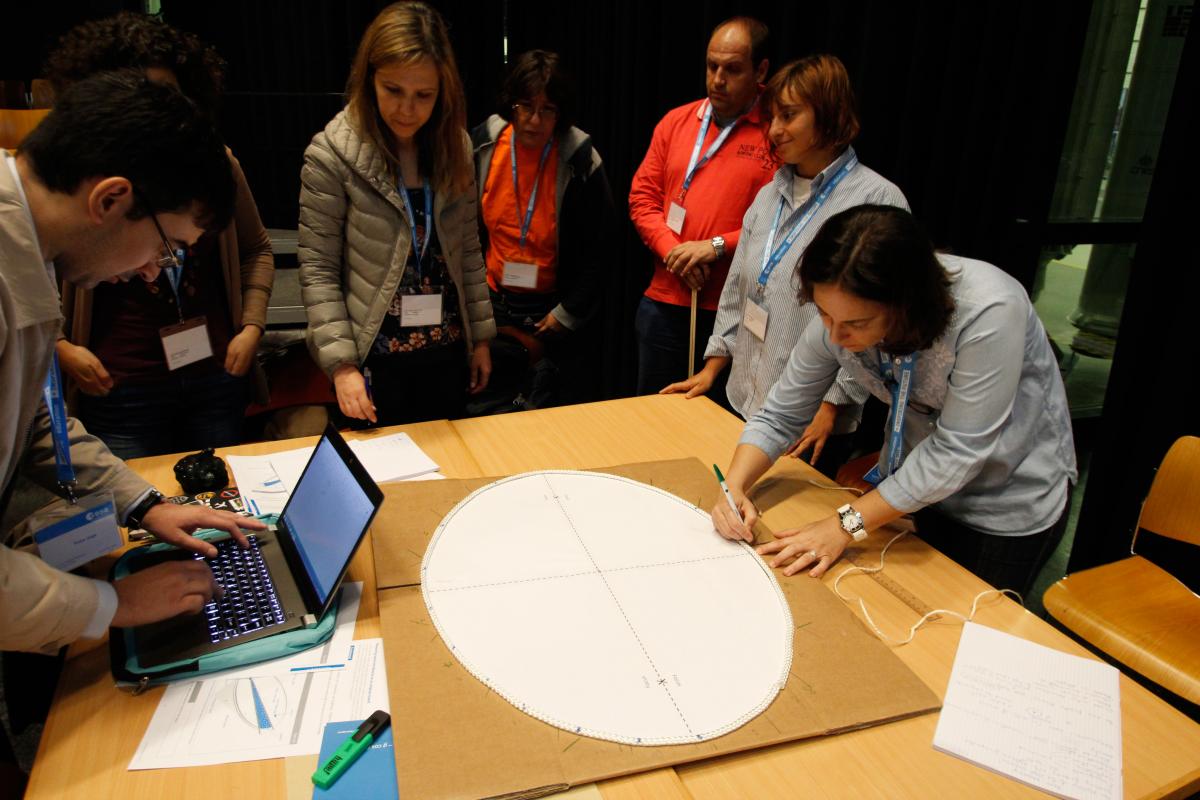
Workshop.
Image courtesy of ESA /
A.Conigli
A diverse workshop programme consisting of practical sessions and lectures from ESA experts will allow participants to explore innovative ways to use space science and astronomy in the classroom to engage students. One of the main topics this year is cosmic light in celebration of the International Year of Light. Participants will also find out more about ESA education activities and resources, as well as the latest from ESA space science and astronomy missions.
The workshop will be held at the European Space Research and Technology Centre (ESTEC) in Noordwijk, the Netherlands, between 23 and 27 November 2015. The deadline for receipt of applications is 09:00 CEST on 21 September 2015.
ESA is Europe’s gateway to space, with its headquarters in Paris, France.
Check out the list of ESA-related articles on the Science in School website.
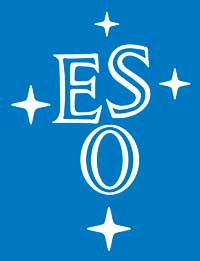
ESO
Applications for the ESO astronomy camp 2015 are now open
Would your students like to spend a week in the Italian Alps carrying out astronomy activities with other friends of their age and become part of a vibrant international community of alumni and astronomers?
ESO is currently receiving applications for their next Astronomy camp, to take place during the Christmas holidays between Friday 26 December 2015 and Thursday 1 January 2016. The camp will be held at the Astronomical Observatory of the Autonomous Region of the Aosta Valley, Nus, Italy, close to some of Europe highest mountains and under a clear sky. The camp will explore the theme of the Solar System and exoplanets via several astronomical sessions, including lectures, hands-on activities and night-time observations using the Observatory telescopes, alongside various social activities, winter sports and excursions.
To register, applicants should fill in an online form and upload a video (maximum 3 minutes) on the theme ‘My favourite astronomical object/phenomenon’ by 4 October.
ESO is the world’s most productive ground-based astronomical observatory, with its headquarters in Garching, near Munich in Germany, and its telescopes in Chile.
Check out the list of ESO-related articles on the Science in School website.
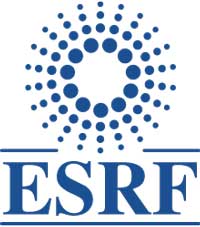
ESRF
Towards safer illumination of paintings
Experiments at ESRF indicate that art galleries and museums should minimise their paintings’ exposure to violet-blue-green as much as possible for the safe display of paintings containing chrome yellows.
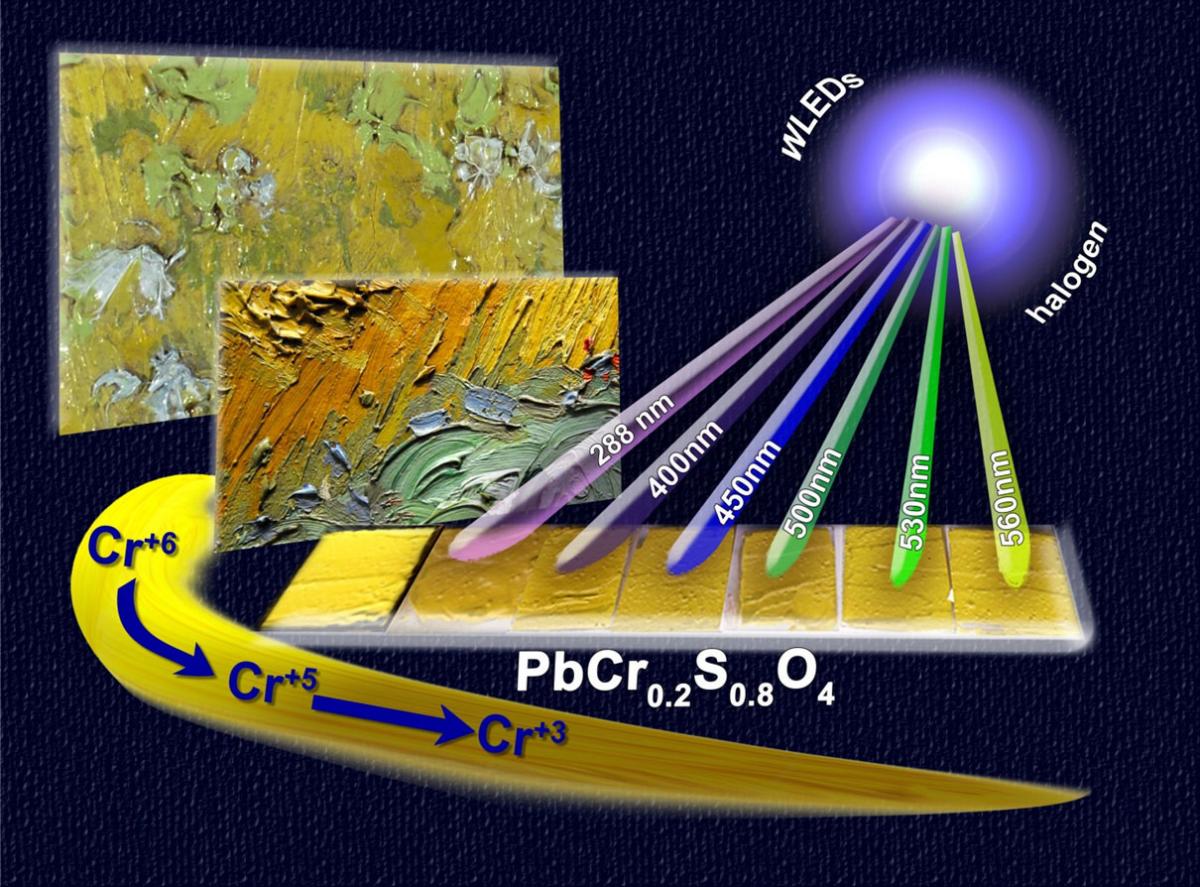
yellow paints exposed to
different wavelengths of
monochromatic light.
Image courtesy of ESRF
Knowledge of the effect of visible light on light-sensitive pigments such as chrome yellows is of great importance for the long-term conservation of unique masterpieces, including those by Vincent van Gogh. A combination of high spatial resolution spectroscopic methods and electron paramagnetic resonance at ESRF allowed a team of scientists from Italy and Belgium to establish that visible light of a blue-green colour is the most effective in stimulating the darkening process of chrome yellows. This occurs via a Cr(VI)→Cr(III) reduction process that also involves Cr(V)-species as intermediates.
For the fuller story, read the ESRF news article.
Situated in Grenoble, France, ESRF operates the most powerful synchrotron radiation source in Europe.
Check out the list of ESRF-related articles on the Science in School website.

EUROfusion
JET-Set: experiments with tritium
There is a ripple of excitement in the fusion community, thanks to a batch of tritium that has reached the Culham Centre for Fusion Energy, UK, which houses JET, Europe’s largest fusion device. The use of tritium, a heavy, unstable isotope of hydrogen, is crucial to the development of fusion power plants that might provide clean and abundant energy in the future.
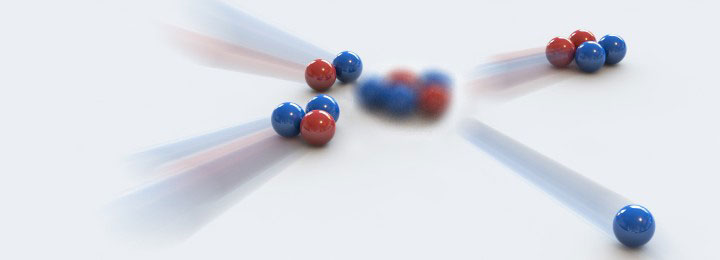
Researchers know that the most efficient fuel for a fusion power plant is a mix of tritium and deuterium, another heavy hydrogen isotope that is available from sea water. But what will the exact results be when the mixture is used in the JET vessel? That is what the fusion community wants to test. So far, the JET fusion experiments in the renovated vessel have been fuelled with ‘regular’ hydrogen and deuterium. Researchers can now test the influence of the tritium–deuterium fuel on plasma performance and on interactions between the plasma and the renovated JET wall.
In many ways, the JET experiments are a test run for ITER, the next generation fusion experiment, which is currently being built in France. ITER will be the first magnetic confinement device to produce a net surplus of fusion energy and to demonstrate the main technologies for a fusion power plant. The deuterium–tritium experiment in JET will provide an important step to gain experience and train a new generation of engineers and scientists.
To learn more, see the story “JET’s next tritium experiments materialise” on the EUROfusion website.
EUROfusion comprises 28 European member states as well as Switzerland and manages fusion research activities on behalf of Euratom. The aim is to realize fusion electricity by 2050.
Check out the list of EUROfusion-related articles on the Science in School website.
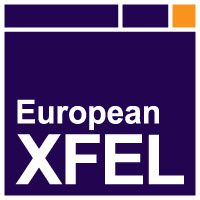
European XFEL
Optical lasers: setting the stage for X-ray laser pulses
At X-ray free-electron lasers such as the European XFEL, ultrabright high-intensity laser-like X-ray light is generated using accelerated electrons travelling through special magnetic structures. While the X-ray laser is the star of the show, there are many supporting characters that are also lasers – namely, optical ones. Currently, scientists at European XFEL are preparing specialised laser setups for the scientific instruments and other parts of the facility.
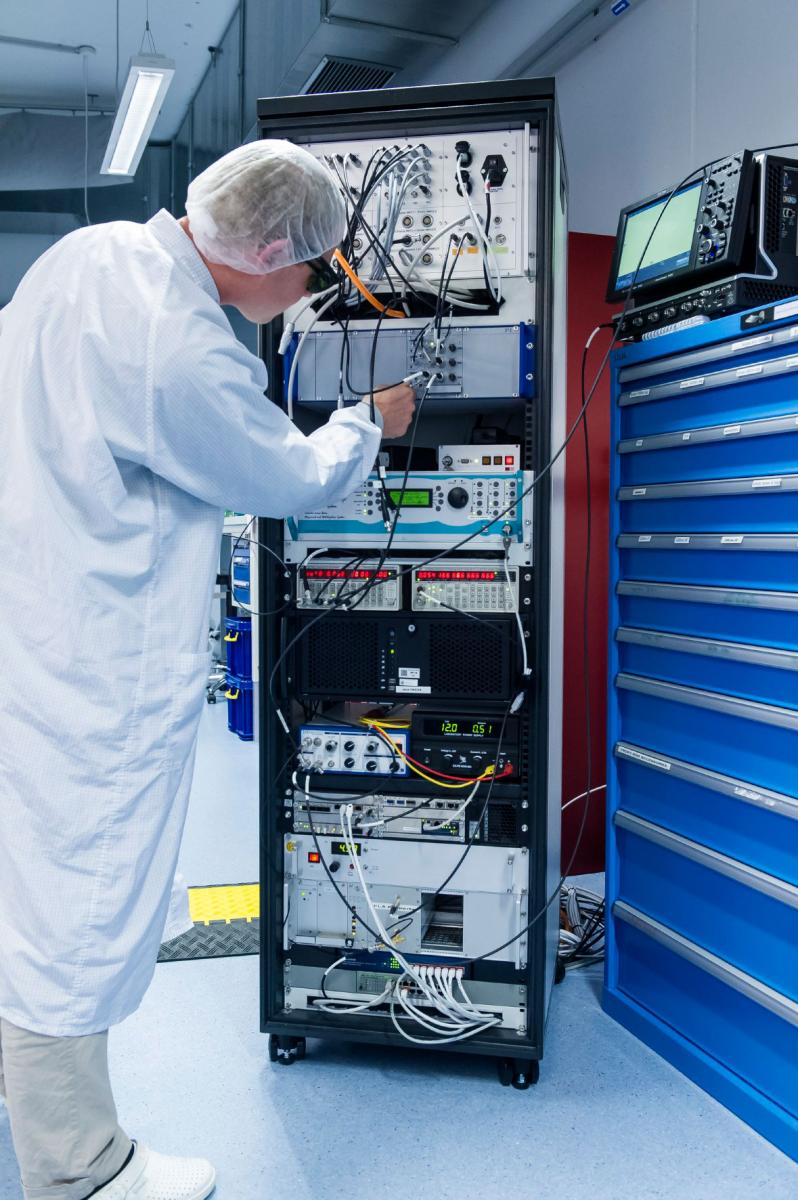
pump–probe laser.
Image courtesy of European
XFEL
If you’ve seen a laser pointer, then you’ve seen a weak optical laser before. In an optical laser device, an active medium accumulates energy and concentrates it to amplify a narrow beam of light rays. Such lasers are used in many ways at European XFEL. An optical laser running through an optical fibre along the 3.4 km length of the facility synchronises everything from the accelerator to the experiments with a precision of tens of femtoseconds (one femtosecond is a quadrillionth of a second). Additionally, optical lasers are built into each of the European XFEL’s six starting scientific instruments. These lasers are used to initiate processes, such as chemical reactions or electron excitations, which then can be studied with up to 27 000 intense X-ray laser flashes per second. These sorts of experiments are called ‘pump–probe’: they use an optical laser to pump the sample with energy and then probe the result using the X-rays.
None of these lasers is as simple as a common household laser device – they have a higher intensity, emit femtosecond pulses, and undergo numerous processes to create the special properties required for each experiment. But perhaps the superlative of the optical lasers is that used for the High Energy Density Science (HED) scientific instrument. For example, a recently announced 100 joule laser that has been contributed to the HED instrument by the UK will be able to compress matter to energetic states similar to those found inside Earth-like exoplanets. The 100 joule laser will enable intense pump–probe experiments for research in astrophysics and other fields.
Laser rooms are currently under construction in preparation for the first instruments to go online in 2017. A dedicated optical lasers group, consisting of scientists and engineers, is working on the development, assembly and integration of five large-scale laser systems for the scientific instruments. Read more about the different instruments on the European XFEL website.
The European X-ray Free Electron Laser (European XFEL) is a research facility currently under construction in the Hamburg area in Germany. Its extremely intense X-ray flashes will be used by researchers from all over the world.
Check out the list of European XFEL-related articles on the Science in School website.
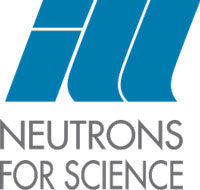
ILL
Neutrons illuminate neurons
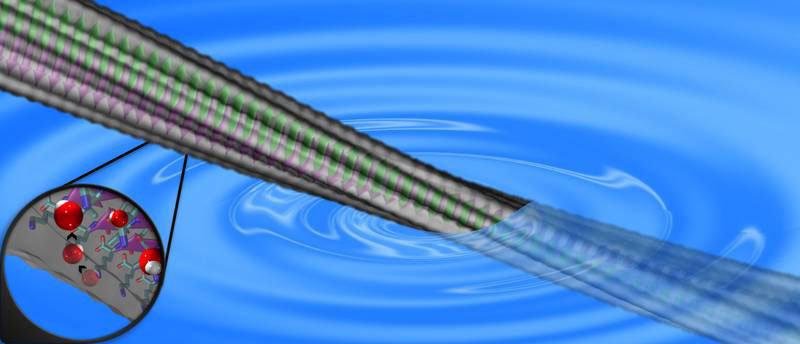
modulated by the
surrounding solvent.
mage courtesy of ILL
Alzheimer’s disease markers could be identified through protein water mobility, suggest ILL scientists. A study of water mobility on the surface of tau protein fibres, one of the pathological hallmarks of Alzheimer’s disease, has been conducted by a global team of scientists using neutron scattering experiments at the Institut Laue-Langevin (ILL) in Grenoble, France, and the Jülich Centre for Neutron Science at the Heinz Maier-Leibnitz-Zentrum (MLZ) in Garching, Germany. The team found that water mobility on the surface of tau protein fibres is increased compared to non-aggregated tau proteins. The findings, reported in the journal Proceedings of the National Academy of Sciences of the United States of America, suggest that the movement of water molecules could be a marker for the presence of amyloid tau fibres and could contribute to the detection of Alzheimer’s disease.
Read more on the ILL news site.
The Institut Laue-Langevin (ILL) is an international research centre at the leading edge of neutron science and technology.
Check out the list of ILL-related articles on the Science in School website.






